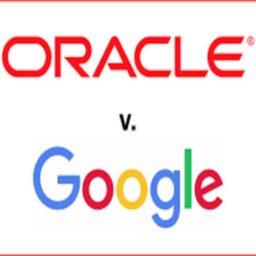Introduction
Anti-trust law seeks to promote fair competition in the market efficiently. It also protects the interests of the consumers. The primary objectives of Competition law are (i) fair competition; and (ii) to secure the interest of consumers. It also prohibits a dominant position in the market. On the other hand, Intellectual Property Law gives absolute rights to the proprietors of licenced innovation, of intellectual property. In addition, they protect the innovations of innovators from commercial exploitation.[1] To put it simply, IP law protects the interest of an individual, whereas Competition law protects the market.
It is well demonstrated from the above that there exists a conflict between Competition law and IP law. IP law gives exclusive rights and monopoly to which anti-trust policy objects to provide. On the other hand, Competition policy and IP rules are harmonious in nature because one encourages novelty and the other ensures fair competition in the market is controlled.
Competition Law v. IPR
The link between IPR and Competition law appears to be contradictory in nature but in reality, it is not; there is a serious need to realise the effective functioning of both regulations. These laws encourage individuals to invest in a dynamic competition by prohibiting neoclassical (static) competition. IP rights give the owners the benefit of making exclusive use of their product for a fixed period. During that fixed period, the owners of patents are given the power of having a monopoly and to dominate their position in the market. Such abuse of dominance will not lead to infringement of competition policy.
Moreover, this complementary nature of IP law and anti-trust is required in making laws regarding licencing. In FICCI Multiplex Association of India v. UPDF,[2] The CCI observed that IPR does not prevail over Competition law policy. Section 3(5) of the act is an exemption, which authorises the use of these exclusive rights of the invention in a reasonable manner.
Competition Law and Patent Law
The main scheme of patent law is to prevent the illegal manufacturing of patented products and consequently, we can say that patent law reciprocates with competition legislation because it contributes to establishing a fair trade, which is the primary goal of the competition act. Competition law concerns only occur when the owner of the patent is using their innovation in a manner that undermines the object of patent rights and is inconsistent with their necessary function[3].
Granting a patent right does not lead to a competition law infringement, but abusing that right will lead to infringement of the competition policies. The rights of a patent are only given for a fixed period i.e. 20 years from the date of filing. Patent law does not permit to give such rights for an unlimited period because it will result in misuse of dominant position and will obstruct the competition by limiting innovations of new products.
Legal Framework
In India, S. 3 of the Competition Act, 2002 prohibits anti-competitive agreements (AAEC). Under Section 3(4) agreements between entities or individuals at a distinct level of the distribution chain in distinct markets, are restrained under this section of the Competition legislation if they are likely to cause an appreciable adverse effect on competition (AAEC). Such agreements are anti-competitive in nature.[4]
The Bombay High Court in, Kingfisher Airlines v. CCI[5] held that under S. 3(5) of the Act does not restrict the owner of IP to file for violation of copyright. The CCI has jurisdiction to hear all the matters in relation to competition policy and IPR.
TRIPS with regard to Competition Law and IPR Policy
The World Trade Organisation formulated an international treaty, widely known as the Trade-Related Aspects of Intellectual Property Rights (TRIPS) to systemise the regulations for various aspects of Intellectual Property Rights. Article 40 of the (TRIPS) recognises that the licencing practices or conditions relating to IPR, which may constrain competition, may have a harmful effect on the market and may hamper the transfer of technology. Article 40(2) of the TRIPS agreement allows Members to shortlist licensing conditions in legislations that may account for abuse of IPR having a detrimental effect on trade in the relevant market.[6]
Judicial Precedents
The main issue that occurs here is whether IP law is in conflict with Competition law or not. There have been many lawsuits between the CCI and the IP owners over their exercise of rights.
In Ericsson (Publ) v. Competition Commission of India,[7] the main issue was regarding the jurisdiction of CCI in determining the accusations of abuse of dominance by the patentee. Ericsson contended that the matter relating to abuse of dominance by a patentee should be dealt with under the Patent Act and not under the Competition act because it lacked jurisdiction. The Delhi High Court held that the Competition Act, 2002 prescribes certain provisions regarding abuse of dominance and the CCI has the jurisdiction to inquire allegations of abuse of dominance arising out of the proprietorship granted by the Patents Act, 1970.
In the case of Entertainment Network (India) Limited v. SCIL.[8] the Apex Court observed the holder of a copyright has a full monopoly but the same is restricted if such monopoly interferes with the effective functioning of the market and violates the anti-trust policy. The court also held that the charge of royalty by issuing a licence is not a total right.
Conclusion
It can be concluded that there is no dispute between the purpose and objectives of both the legislations. Anti-Trust law prevents abuse of dominance and unequal monopoly practices whereas IP law grants the innovator a monopoly right for a fixed duration of time. These two laws are complementary because they encourage innovation and consumer welfare. Competition law aims to maintain a balance between the consumers and manufacturers by promoting fair competition in the market and Intellectual Property Rights seeks to reward the manufacturer for his sole creation which in large will promote public welfare. Therefore, the Competition Commission of India should establish specific guidelines to deal with disputes regarding the provisions of IP law and Anti-trust Law.
Author(s) Name: Pratishtha Malhotra (Amity University, Noida)
References:
[1] Vatsala Sood, Interface between IPR and Competition Law, Legal Bites (Oct. 14, 2021, 9:00 PM), available at: https://www.legalbites.in/interface-between-ipr-and-competition-law/.
[2] FICCI Multiplex Association of India v. United Producers Distribution Forum, Case No. 1 of 2009.
[3] Gazala Parveen, The Interplay between Competition Law and IPR, IPLEADERS (Oct.10, 2021, 3:10 PM), https://blog.ipleaders.in/interplay-competition-law-ipr/.
[4] The Competition Act, 2002, S 3, No 12, Acts of Parliament, 2003 (India).
[5] Kingfisher Airlines Limited v. Competition Commission of India, [2011] 100 CLA 190 (BOM).
[6] Agreement on Trade-Related Aspects of Intellectual Property Rights, (Article 40).
[7] Telefonaktiebolaget LM Ericsson (Publ) v. Competition Commission of India, 2016 SCC OnLine Del 1951.
[8] Entertainment Network (India) Limited v. Super Cassette Industries Ltd, (2008) 13 SCC 30.










